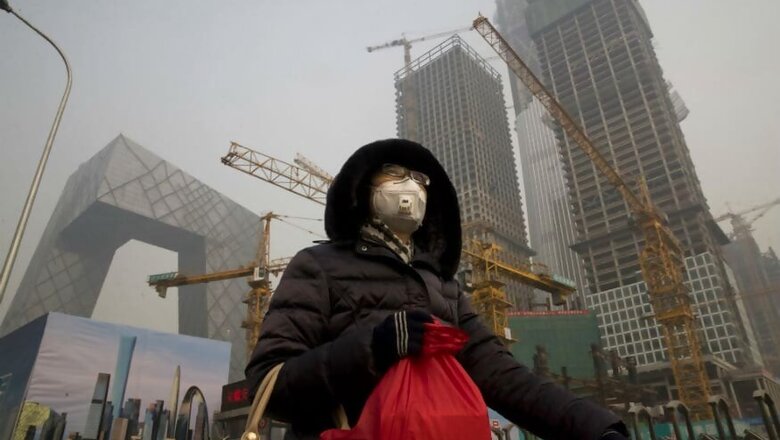
views
Beijing: Beijing residents concerned about breathing the capital's thick gray air are adapting, inventing and even creating businesses to protect the health of their families and others. Some of their efforts could help people around the world.
Already this year, the smog-shrouded capital has suffered particularly hazardous bouts of pollution caused mainly by coal burning and vehicle emissions. Like other Chinese cities, Beijing is trying to tackle the problem: City authorities say they will spend $2.7 billion this year to help replace coal with natural gas, close heavily polluting factories and take older vehicles off the road.
Official figures show improvement since 2013, but Beijing has a long way to go. With no quick fix available, many residents developing their own partial solutions.
For the last four years, Zou Yi has diligently captured the sky's change in colors from the window of his central Beijing apartment, where he can usually see the landmark Beijing Television tower. The background in his photos runs from dirty brown to deep gray, interspersed with one or more days of cobalt blue. On the worst days, nearby buildings can't be seen.
A 10-day period of particularly heavy pollution inspired his project. The government had just started publishing data on levels of PM2.5 tiny particulate matter that can clog lungs and a taboo on state media's discussion of the sensitive topic had just been lifted.
"I couldn't go out, I couldn't open windows, I couldn't see the building next to me because the smog was so bad," he said.
Zou shared the photos on the Twitter-like Sina Weibo and the smartphone messaging app WeChat. He found his friends had similar feelings of frustration and recruited his building manager to take the pictures when he was out of town.
"They wanted me to share a photo with them every day, so I did it every day, every month," said Zou, 50. Hundreds of thousands of people have seen his photos on social media. What started as a way to complain has morphed into his full-time passion. This month, Zou set up the non-governmental organization BeijingAirNow to work with scientists on technology to read pollution levels from around the world by analyzing the tint in the images rather than using expensive monitoring equipment to collect air particles. He says he is handing over more than 300,000 photos for computer analysis.



















Comments
0 comment